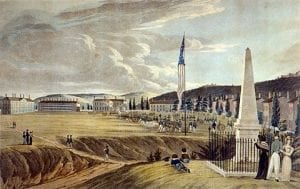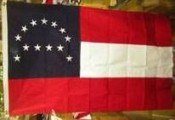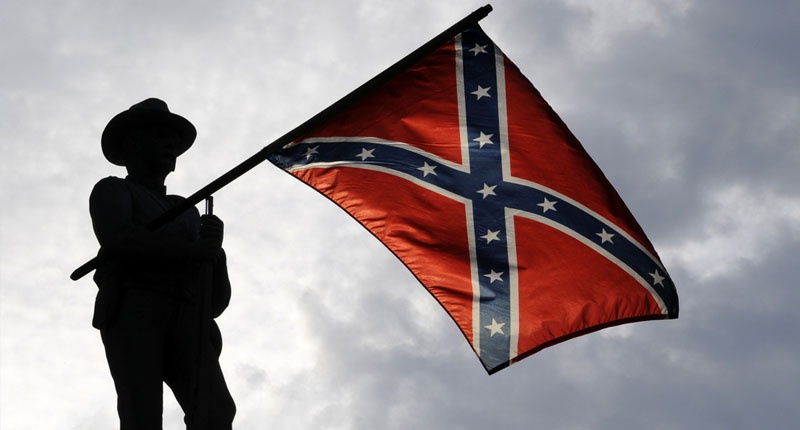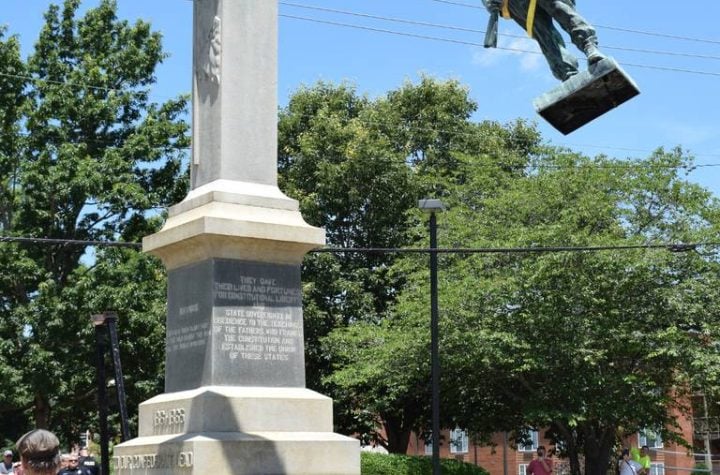

As was true of many generals on both sides of the Civil war, Robert E. Lee was a graduate of West Point with a distinguished military career. This was so much the case that in April of 1861 Lincoln offered Lee command of Federal forces, an offer he turned down. Let’s examine why.
Lee was an exceptional commander, holding out against an army three times larger than his own, his enemies far better equipped. Adored by his men, it can be said that he never asked more than he was willing to do himself.
Known as “Uncle Robert” to thousands of his troops, he inspired the kind of confidence that has to be felt to fully understand. Once, in the chaos of the battle of Sayler’s Creek, Lee rode into the thick of his men. He grabbed a Battle Flag, holding it high and facing the enemy while hot flames lit the scene. These are the words of Capt. John Cooke:
“… The sight of him aroused a tumult. Fierce cries resounded on all sides and, with hands clinched violently and raised aloft, the men called on him to lead them against the enemy. ‘It’s General Lee!’ ‘Uncle Robert!’ ‘Where’s the man who won’t follow Uncle Robert?’ I heard on all sides – the swarthy faces full of dirt and courage, lit up every instant by the glare of the burning wagons.”
Taking command of the Army of Northern Virginia, Lee used a unique headquarters flag. While the well-known Southern Cross was used on the field of battle itself, commanders typically used the National Flag of the Confederacy to indicate their headquarters location. Lee’s flag was the First National Flag, with a distinctive star pattern.

The flag’s thirteen stars represent the eleven states that seceded and joined the Confederacy, along with Missouri and Kentucky which had strong Confederate leanings. On Lee’s flag the stars are arranged in the so-called Bread of Life pattern.
It is thought that this flag was sewn by Lee’s wife and daughters. We are speculating at this point as we don’t have any first hand reports, but it is said that Mary Custis Lee used this pattern to represent the biblical Ark of the Covenant. (Mary Custis was the daughter of George Washington Parke Custis, the adopted son of George Washington.)
We know this flag was flying up to and through the Gettysburg campaign of July 1863, and was likely used for months later. It was preserved and still exists today. Few flags are so well associated with a single man; fewer yet are still reproduced and flown in honor of an individual.
A final word on the man himself. Today some may wonder why he and so many others chose their states over the union. It may help to try to put ourselves in their position. Let give you some words from a letter Lee wrote to his sister right after he resigned his commission is the United States Army:
“I have not been able to make up my mind to raise my hand against my relatives, my children, my home. I have therefore resigned my commission in the Army, and save in defense of my native State, with the sincere hope that my poor services never be needed, I hope I may never be called on to draw my sword.”
How would it be to take arms against relatives, children and home? One shudders to imagine. So many today talk of the social and political issues behind these matters, and they were grave, indeed. But for the individuals involved it was a matter of protecting the lives and homes of family and friends, or being with those who would destroy them.
So Lee saw his duty as first to his State of Virginia:
“If Virginia stands by the old Union, so will I. But if she secedes (though I do not believe in secession as a constitutional right, nor that there is sufficient cause for revolution), then I will follow my native State with my sword, and, if need be, with my life.”
Lee recognized the conflicting standards of his times. His skills were amazing on the battlefield and in leading men, and in this he did what he thought was right. It is easier to understand this when we consider the still-strong Southern love of family and the home.





More Stories
They Called Him “The Gray Ghost”
Nathan Forrest: No Wonder He Won So Many Battles
The First Secession: The Mecklenburg Declaration of Independence.